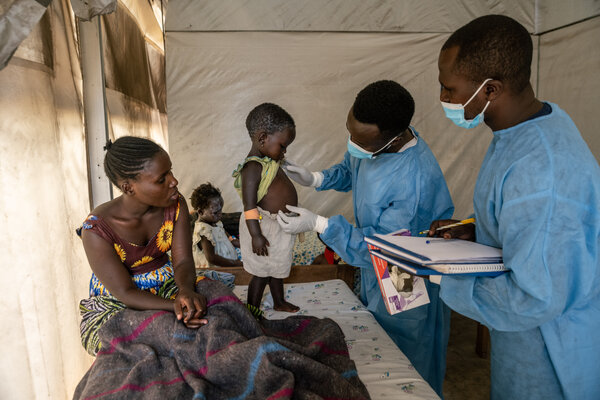
Children wailed as their mothers washed their small, frail bodies covered with sores and lesions. Adults coughed repeatedly, their throats so swollen that they could barely speak.
Mpox is spreading largely unchecked in the Democratic Republic of Congo. The New York Times visited a remote hospital in the eastern lakeside town of Kavumu that is overwhelmed with patients.
Cases have appeared in more than a dozen African countries, including Kenya, Nigeria and South Africa, and as far as Sweden and Thailand. The World Health Organization has declared it a global health emergency.
 |
In eastern Congo, mpox is infecting people in cities, villages and overcrowded camps that host millions of people displaced by ongoing conflict in the region.
More than 17,000 people in Africa have been infected with mpox, a disease that is closely related to smallpox. Mpox has killed nearly 600 people on the continent, or about 4 percent of those infected.
Most of them have been children.
 |
 |
They struggle to walk because of the rashes on their legs and groins.
They suffer from high fevers and headaches.
They struggle to breathe, to eat and drink through their swollen throats.

The disease is more fatal in children, many who are already weakened by malnutrition and other illnesses.
Another version of the virus causing the disease has spread among adults, especially through sexual contact.
There are no vaccines for mpox available in Congo.


Seven-year-old Nathalie winced one morning as a nurse injected an antibiotic in her arm.
It won't cure mpox, but it can help treat infections caused by the skin lesions.
Nathalie has been hospitalized for the past two weeks in Kavumu, in Congo's South Kivu province.


In late July, Guylaine Makambo brought her 9-year-old daughter Ornella from the camp of Muja to the Munigi treatment center, near Goma, the provincial capital.
